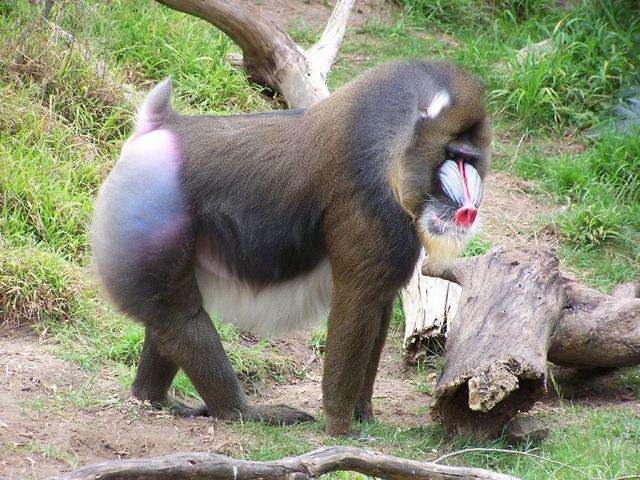Mandrillus sphinx
IUCN
LCBasic Information
Scientific classification
- name:Mandrillus sphinx
- Scientific Name:Ghost-faced baboon, colorful baboon
- Outline:Primates
- Family:Eutheria Primates Simiomorpha Cecidia Macacinae Mandrill
Vital signs
- length:61-76.4 cm
- Weight:11.5-25 kg(The largest male weighs 54kg)
- lifetime:20-30 years old, and can live up to 46 years old under captive conditions
Feature
The world's largest monkey primate, also known as the "ghost" of the mountains.
Distribution and Habitat
Mandrills are mainly distributed in the southern part of the Sana River in Cameroon, Bioko Island in Equatorial Guinea, Gabon and Congo in Africa. Mandrills prefer to live in dense tropical rocky areas.
Appearance
Mandrills have ghostly faces, long faces, and bright red noses, which make the bright colors stand out more than the dark colors around them. There are deep vertical lines on both sides of the nose, a tuft of goatee under the chin, and the head is covered in long hair. The hair on the body is brown, fluffy and dense. The buttocks are purple due to the abundance of blood vessels. When they are emotional, the color will be more obvious. This feature is partly because female mandrills like it, and another reason is that it makes it easier for them to see the location of other members when they are moving in the dense forest. The color of the face of female and juvenile mandrills is relatively darker than that of males. The bright colors help mandrills recognize and communicate with each other in the dense jungle.
Mandrills are omnivorous and have a diverse diet. They usually eat plants, and can eat more than 100 plant species. They like to eat fruits, but they also eat leaves, vines, b
Details
It is a monkey, but it is not as docile as other monkeys. It is ferocious by nature and has strong fighting power. It is not afraid even when facing medium-sized ferocious animals, because it is smart and holds grudges. After losing a fight, it will always harass the opponent, and even lions have to give it some ground. Although its natural enemy is the cheetah, it does not feel afraid at all, so people often say that it is better to meet jackals than to provoke mandrills, which shows that it is extraordinary.

It also has a unique feature, that is, its colorful color. Although this is a symbol of their status and a means for them to please female mandrills, it is also easy to attract their enemies. The reason why mandrills are so colorful is that they generally use these colors to determine their status. In addition, female mandrills also prefer males with more colorful fur.
Female mandrills and young mandrills do not like to climb, so most of them are active on the ground and only climb up trees to rest at night. They only climb trees when they are looking for food or avoiding danger.
Mandrills have strong running ability, and even macaques are not their opponents. Scientists have tested that the fastest speed can reach 40 kilometers per hour.
Adult mandrills are aggressive and aggressive, and can fight medium-sized beasts. The leading old male monkey is brave and warlike, with long and sharp teeth, sharp claws, and strong arms, about three times that of an ordinary adult. They are threatening to all kinds of enemies. When they get angry, even small leopards are in awe of them, and sometimes they will attack poisonous snakes and other animals. The IQ of mandrills is also quite high, comparable to that of baboons, and they are one of the smartest primates.
However, the current situation of mandrills is very dangerous. First of all, their habitat has been severely damaged by some human activities, resulting in a sharp decline in the number of mandrills, and the large-scale killing by hunters has led to a further decrease in the number of mandrills. This species has been listed as Vulnerable (VU) in the 2009 edition of the World Conservation Union (IUCN) ver 3.1.








